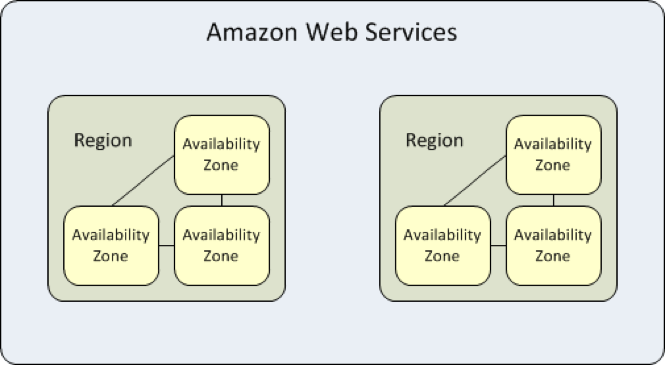Let’s first ask the question, why AWS? What is AWS in the first place? We’ll find out in this shot. Then we will see the AWS infrastructure and how it is deployed.
AWS is nothing but a cloud. What is this cloud? Before we get into the technical meaning let’s see the literal meaning. What is a cloud? It’s a collection of gas molecules that are held together by dust in the center. Now, try to relate this dust with the physical hardware & the gas molecules as IT resources. Another important question. Where is a cloud present? Obviously in the sky. The sky here is nothing but the internet. When we put these words together, we get this definition –
Cloud computing is the on-demand delivery of IT resources through a cloud services platform via the internet. IT resources like compute power, database storage, applications, etc. Try to relate. As the gas molecules are covered by the dust on all sides, the IT resources also need hardware to function.
Now, I’ll answer why AWS? Benefits of Cloud Computing.
- Capital expenses change into a variable expense
- Scaling your hardware as per your needs
- Increase speed and agility
- Stop spending money on running and maintaining data centers (hardware)
- Go global in minutes
I need not explain these points as they are self explanatory. Still if you are not able to understand, drop a comment.
What’s the goal to achieve here? Simply, move from all on-premises to an all-in-the-cloud deployment. AWS offers a broad set of global cloud-based products, including compute, storage, databases, analytics….blah blah blah. Just know it offers different IT products and services.
AWS Partner Network (APN)
Another reason I prefer AWS is APN. AWS Partner Network. APN Partners are focused on your success, and they help customers take full advantage of all the business benefits that AWS has to offer.
Last but not the least…
AWS Marketplace
The AWS Marketplace is a digital catalog with thousands of software listings from independent software vendors, where you can find, test, buy, and deploy software to run on AWS.
AWS Infrastructure
Whole AWS is built around 2 keywords. Regions & Availability zones.
Region
A Region is a geographically self-contained area where all of the resources you need for your application, all the compute, all the storage, are contained. It’s going to be inside a single country boundary bounded by a single set of laws, and they are right now located all around the world. You might find that we have a Region located in London, for example.
Every Region is designed to be self-contained to have all the assets you need to run your application.
Now the question is how to decide which region is best for your business? It turns out there are four specific questions, four considerations, that you need to ask.
- The first question is pretty obvious, and it has to do with latency. Where are your customers located? If they live in Rio, it makes a lot of sense to run your application out of the Sao Paulo Region. Simply because the speed of light is going to be a lot closer.
- So when speed is a priority, latency becomes the main factor
- Not every Region is priced the same, because each different country has its own set of tax laws, their own financial situations, you’ll find the exact same services in different Regions may have different costs.
- So, if the budget is one of your strong considerations, you might look to some other region even though the latency may be more.
- Legal restrictions may change the entire conversation altogether.
- For example, take Germany. In which case you might be required by law, based on the type of load you’re running, that you must run in the Frankfurt data center. While you’ll have great latency because your customers are in Germany anyway, that this compliance outweighs any other consideration because of legal restrictions.
- Service availability
- Different products take different time lengths to reach all the regions.

Availability zone.
Now, what are these regions made of? At AWS a region is a collection of availability zones. What is an availability zone? Think of it as a building, for example, a stand-alone data center or a group of data centers. You must be wondering by now, why multiple AZ’s then, right? For some reason, we could lose connectivity to everything in an availability zone. There might be some other natural disaster, a hurricane, a tornado, an earthquake. Or perhaps someone hacks into one particular data center(AZ).
AWS connects those availability zones with a proprietary high-speed fiber network, multiple lines between every availability zone so you can treat it as a single area. But you run your application simultaneously across all of the availability zones.
That’s it for now. In the next shot I’ll teach you how to set up your virtual server in AWS.

